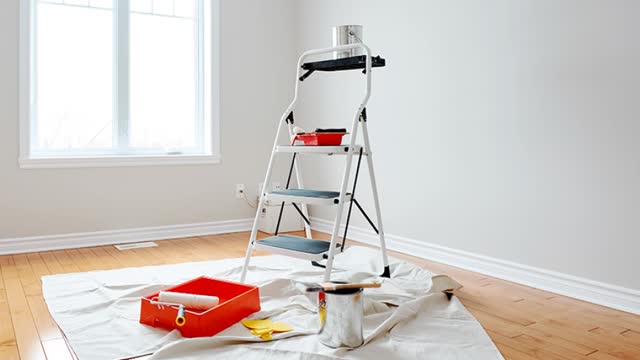

Begin by either emptying the room or relocating the furniture to the center and protecting it with plastic.
For the floor, use canvas drop cloths since plastic can get slippery.
Turn off the circuit breakers for the room you are painting.
Next, take off the cover plates from switches and outlets, and safeguard them with tape.
If you are painting the ceiling, remove the blades from your ceiling fan, slide down the cover plate, and wrap it with plastic.
Doorknobs can be wrapped with a plastic bag.
After ensuring the area is adequately covered, you can begin making repairs.
Strip old wallpaper with a paper remover and removal tools.
To address flaking paint, employ a putty knife to gently scrape it off. Focus on removing the loose portions without exerting excessive force.
Now if you're like the rest of us, you probably have a few dings in your walls. But no worries, they're an easy fix.
First clean the hole with a brush, then apply some spackle—or wood filler for trimwork.
Let it dry, sand smooth, and prime.
For larger holes, a patch kit is an excellent solution.
A clean wall is essential for a quality paint job. Vacuum dust and do a quick wipe down with a damp rag.
If your walls have oil or other residue, clean them with trisodium phosphate—TSP for short—for a more thorough cleaning. Afterward, rinse with water and allow them to dry.
The subsequent step involves priming. Priming is essential when painting over bare drywall, stained or repaired areas, high-gloss finishes, or making drastic color changes. Many paint-and-primer-in-one products are available, which can save time during this step.
Additionally, be aware that certain surfaces, such as trimwork, may have been painted with oil-based paint, which cannot be painted over with latex.
To check the type of paint on a surface, dampen a cotton swab with alcohol and rub it on the painted area. If the paint comes off, it's latex. If not, it's oil-based.
In such a case, lightly sand the surface and apply a bonding primer to ensure proper adhesion.
And that concludes the preparation process.